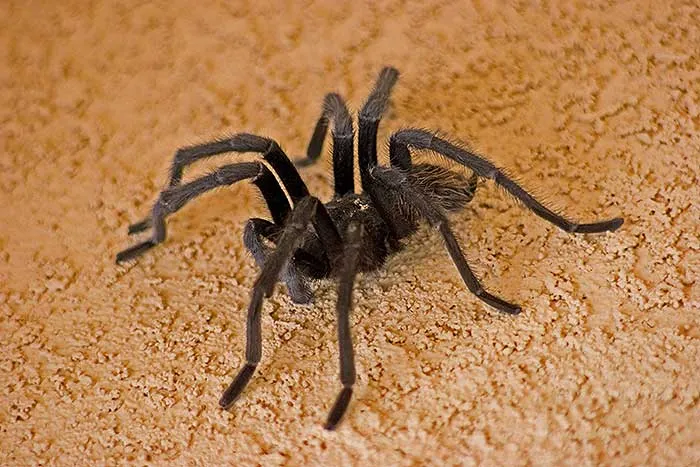Tarantula Venom The Basics
Tarantulas, those large and often hairy spiders, are a source of both fascination and fear. One of the most common questions surrounding these creatures is about their venom. Are tarantulas poisonous? The answer, while seemingly straightforward, has nuances. Understanding the nature of tarantula venom is crucial for anyone interested in these arachnids, whether as a pet owner, enthusiast, or simply someone curious about the natural world. This article delves into the facts about tarantula venom, its effects, and what you need to know.
Is Tarantula Venom Poisonous?
The term “poisonous” is often used in the context of something that is harmful when ingested, inhaled, or absorbed through the skin. Tarantulas, however, are venomous, meaning they inject toxins through a bite. These toxins are designed to subdue prey, not necessarily to cause significant harm to humans. The venom of most tarantula species is not considered highly toxic to humans, and a bite is usually comparable to a bee sting. However, individual reactions can vary, and factors such as the species of tarantula and the individual’s sensitivity play a role.
The Effects of Tarantula Venom on Humans

When a tarantula bites, the venom is injected into the skin. The effects of the venom on humans can vary. Common symptoms include localized pain, redness, and swelling at the bite site. Some individuals may experience itching, muscle cramps, or a mild fever. More severe reactions are rare but can occur, especially if the person is allergic. These might include difficulty breathing, increased heart rate, or more intense swelling. It’s important to note that the severity of the bite can also depend on the size of the tarantula and the amount of venom injected.
Top 5 Facts About Tarantula Venom
Fact 1 The Venom’s Composition
Tarantula venom is a complex mixture of enzymes, peptides, and other compounds. These substances work together to incapacitate prey. The specific composition of the venom varies between different tarantula species, which is why the effects of a bite can differ. The venom’s primary purpose is to aid in digestion by pre-digesting the prey’s tissues. The composition is constantly being researched to understand its properties and potential medical applications.
Fact 2 The Type of Bite

Tarantulas deliver venom through their fangs. The bite itself often feels like a sharp prick. Unlike some other venomous creatures, tarantulas do not inject a large amount of venom. Their bites are primarily defensive, meaning they usually only bite when they feel threatened. The fangs of tarantulas are designed for grasping and piercing, rather than for a deep injection of venom. This bite mechanism affects how the venom is delivered and how it impacts the victim.
Fact 3 Allergies
Some people are allergic to tarantula venom. Allergic reactions can range from mild to severe. Symptoms of an allergic reaction might include hives, swelling, difficulty breathing, and in rare cases, anaphylaxis, a life-threatening condition. Anyone who suspects they are experiencing an allergic reaction after a tarantula bite should seek immediate medical attention. It’s always a good idea to monitor the bite site and be aware of any unusual symptoms.
Fact 4 The Severity of a Bite
The severity of a tarantula bite depends on several factors. The species of tarantula, the amount of venom injected, and the individual’s sensitivity all play a role. Most tarantula bites are not life-threatening and cause only minor symptoms. However, it’s crucial to observe the bite site and monitor for any unusual symptoms. The size of the tarantula also influences the potential severity. Larger tarantulas may be able to inject more venom.
Fact 5 Medical Attention

Most tarantula bites do not require medical attention. However, if symptoms are severe or if there are signs of an allergic reaction, medical attention should be sought immediately. Doctors can provide treatment to alleviate symptoms and address any complications. It is important to keep the bite area clean and apply a cold compress. In the event of an allergic reaction, medical professionals can administer antihistamines or epinephrine to counteract the reaction.
Are All Tarantulas Venomous?
Yes, all known species of tarantulas are venomous. The venom is a natural defense mechanism and a tool for hunting prey. While the venom is not typically dangerous to humans, it can cause localized pain and discomfort. The potency of the venom varies among different species, with some having stronger venom than others. Regardless of the species, it’s essential to treat all tarantula bites with respect and caution, even if the risk of serious harm is low.
How to Treat a Tarantula Bite
Treating a tarantula bite usually involves basic first aid. Clean the bite area with soap and water. Apply a cold compress to reduce pain and swelling. Over-the-counter pain relievers like ibuprofen can help manage any discomfort. Monitor the bite site for any signs of infection or allergic reaction. If symptoms worsen or if you experience difficulty breathing, seek medical attention immediately. It is essential to remain calm and avoid any unnecessary stress.
Prevention Measures

Preventing tarantula bites is important. If you own a tarantula, handle it carefully and avoid any sudden movements. Always supervise children around tarantulas. When working in areas where tarantulas might be present, wear protective clothing, including gloves. Be mindful of their natural habitat and avoid disturbing them. Educate yourself about the species and their behavior to reduce the risk of bites.
When to Seek Medical Help
Seek medical help if you experience severe symptoms after a tarantula bite. These symptoms might include difficulty breathing, chest pain, or excessive swelling. If you show signs of an allergic reaction, get medical assistance immediately. Any unusual or worsening symptoms should prompt a visit to a healthcare professional. Prompt medical attention can prevent complications and provide appropriate treatment.
Conclusion
In conclusion, while all tarantulas are venomous, their venom is generally not considered highly dangerous to humans. Most bites result in mild, localized symptoms. Understanding the nature of tarantula venom, how it affects humans, and how to respond to a bite is essential for anyone interested in or interacting with these fascinating creatures. By following safety guidelines and knowing what to do in case of a bite, you can appreciate tarantulas while minimizing any potential risks. Always prioritize safety and seek medical help when necessary.
